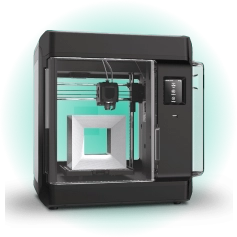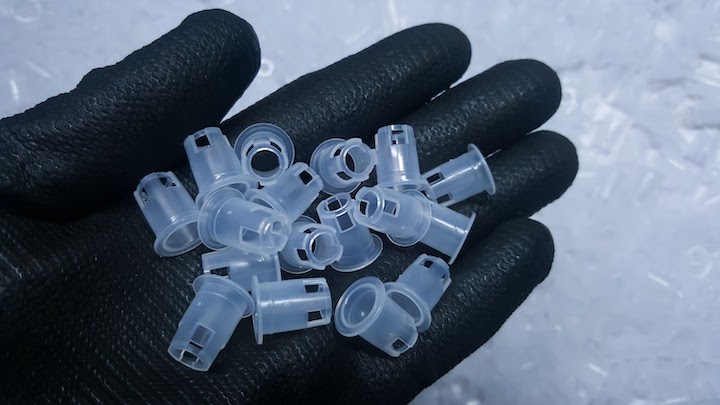Time to read: 5 min
What is lean manufacturing? How do you design for lean manufacturing? And how does it apply to your product development cycle?
The idea and practices of lean manufacturing grew from auto manufacturing—Henry Ford and then Taiichi Ohno (of Toyota) were the pioneers of lean manufacturing. Its roots go back decades, but lean methodologies and lean systems of thought have spilled over into countless other disciplines and industries, including IT, software development, telecommunications, and construction.
Why? These principles work and are highly transferrable. Lean manufacturing disciplines not only apply, but are critical, to the product development process you’re in the middle of, too. This article will give you an abbreviated rundown of what lean manufacturing is and a few of the most important ideas, so you can apply its principles to the product you’re developing.
Lean Manufacturing—What is it?
Lean manufacturing has its roots in the Toyota Production System (TPS), created by Taiichi Ohno (who credited his inspiration and learnings to Henry Ford’s manufacturing system and book). But what’s the true lean manufacturing definition? Lean manufacturing (or lean production) is, at its core, about the identification of value-add activities and the continuous identification and elimination of waste surrounding those value-add activities.
Seeing as Lean Manufacturing is so centered around elimination of waste, the Toyota Production System categorized and defined the specific types of waste it sought to eliminate, with those being:
-
Muri (overburden) – unnecessary or excessive work tasks or efforts that can be avoided by proper work design and planning.
-
Mura (unevenness) – variability that creates waste (for instance, delivery lead time of parts may cause delays to manufacturing start times, and variability in production output or demand can create swings in inventory levels).
-
Muda (unnecessary resource use) – non-value-added activities that result from variation in the system (the seven original wastes include transportation, inventory, motion, waiting, overproduction, overprocessing, and defects).
Many tools have been developed in support of lean manufacturing that may or may not be applicable across disciplines and industries. However, one of the biggest constants is the idea of continuous improvement. Continuous improvement (both the acknowledgement that there is the room to improve and the systems to incrementally improve) is a key pillar of lean systems and is a mindset that is necessary to drive away wasteful, value-sapping practices in manufacturing and other disciplines.
Optimize for Lean Manufacturing
During the product development process, it’s helpful to consider how you can help ensure a product is better designed for lean manufacturing. One way to help is through design for manufacturability (DFM). Your manufacturing partner is a fantastic resource, especially as you move closer towards pre-mass production manufacturing runs.
Seek DFM feedback early for the manufacturing process you plan use for your parts, so your manufacturer can provide you with the feedback necessary to modify wasteful or expensive design features, while ensuring manufacturability. The easier to produce each part, the better. This will help cut costs for when you get into mass production and perhaps cut out a design iteration or two, as you concurrently design for your customer and incorporate DFM feedback.
Another way to help your entire company immensely is to proactively work with your supply chain manager or trusted manufacturing partner to make sure the components with which you’re working can be sourced to optimize for pull manufacturing. A few questions worth asking include:
-
Can components be source geographically close to where you’ll be manufacturing, in order to reduce transportation lead time?
-
Are you using as many off the shelf components as possible that meet product design requirements?
-
Are you able to secure low minimum order quantities at a price within your cost requirements for this part?
The more of these questions to which you answer “yes,”, the easier it will be to pull in lead time and move production decisions closer to a pull system that is based on takt time (the rate of production necessary to produce a product at the rate of customer demand), potentially reducing overproduction and inventory. Also, using standard off the shelf components can often reduce the assembly time your product requires.
Lean Applied to Hardware Development
Lean product development has branched off from lean manufacturing as another discipline. Here are a few things to consider to add value and reduce waste around your hardware development lifecycle.
For one, don’t assume to know all the preferences of your customers when it comes to your product. Voice of the Customer is traditionally a process and tool used to suss out the required product features to meet customer needs prior to starting the product development process. That being said, the principle of seeking customer feedback is nearly as important (if not more so) during the development process. Seek feedback from colleagues (at a minimum) and external customers (if possible) on design iterations to eliminate unnecessary features that don’t add value for your customers.
Lean software development processes, which have branched from lean manufacturing principles, have also had a significant impact on hardware development practices. Agile software development focuses on removing waste and non-value-add activity (seen in the Manifesto for Agile Software Development principle “Simplicity—the art of maximizing the amount of work not done—is essential”), learning quickly, making decisions as late as possible, and delivering iterations of the product rapidly.
The most common framework for implementing these methodologies is Scrum, which uses a team of five to nine people, with one team member (the “product owner”) focusing on the voice of the customer. Scrum teams divide their work into sprints—iterations of work over the course of a project that last one to four weeks each.
These methodologies translate into lean hardware development through a focus on iterating quickly—teams sometimes force weekly or biweekly team-wide CAD freezes (perhaps at the end of a sprint) to force learnings from physical prototypes—and through an emphasis on reducing the waste of waiting to turn around prototyped parts. After all, consider the cost of wasted engineering time waiting for a part to be delivered, versus the $100 saved in production costs by getting parts delivered a day or two later. This is precious time that could be spent on next iteration of your part or product.
Main Takeaways
Hopefully reading this article has given you a better understanding of how you can use lean principles (from lean manufacturing and, consequently, lean software development) to improve your product development processes. Lean is centered around reducing waste, no matter the application, and delivering superior value to your customer. Lean is applicable well before your product makes it into manufacturing, so heed some of the above advice, and it will pay dividends for your product and company as a whole.










